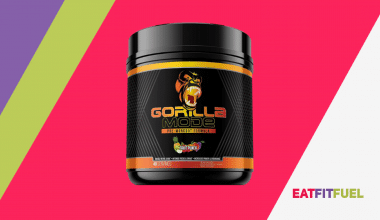Introduction
Yoga is a great form of exercise if you want to improve your strength, balance, and flexibility. Yoga’s popularity has skyrocketed exponentially in recent years. The number of Americans practicing yoga has grown from 20.4 million to 36 million between 2012 and 2016. As important as it is to stay healthy and active, you should put equal importance on keeping your workout equipment clean. Knowing how to clean a yoga mat is important in staying healthy and safe while practicing yoga.
In this comprehensive guide, we will be discussing multiple tips suggested by experts on how to clean a yoga mat. We will also discuss the importance of cleaning your yoga mat and how often should you do so.
Overview
Knowing How To Clean a Yoga Mat
Methods to Clean and Disinfect Yoga Mats
1. Basic Cleaning
2. Deep Cleaning
The Importance of a Clean Mat
1. Hygiene
2. Odor Control
3. Longevity
4. Slip Resistance
Common Pathogens Found in Yoga Mats
The Impact of a Dirty Yoga Mat on Health
Frequently Asked Questions (FAQs)
Methods to Clean and Disinfect Yoga Mats
Cleaning and disinfecting your yoga mat is essential for maintaining its hygiene and extending its lifespan. It’s important to identify which cleaning agents to use for your yoga mat so that you don’t end up damaging it instead of cleaning it. Using the wrong cleaning products may lead to corrosion and discoloration.
Basic Cleaning
- Soap and Water: The most straightforward method is to mix a few drops of mild dish soap or a gentle, mat-specific cleaner with warm water in a spray bottle. Lightly spray your mat, wipe it with a soft cloth or sponge, and rinse it thoroughly with clean water. Allow it to air-dry before rolling it up or using it again.
- Vinegar and Water: Mix equal parts of water and white vinegar in a spray bottle. Spray the solution onto your mat, wipe it with a cloth, and rinse it with clean water. Allow the yoga mat to air-dry before use.
- Baby Wipes: Unscented baby wipes can be one of the fastest and most convenient ways to clean your yoga mat quickly. It’s great for when you’re at the gym and you need to quickly freshen up your yoga mat.
Deep Cleaning
- Bathtub Soak: Before doing this, you have to make sure that the material of your yoga mat is safe to be submerged in water. For a deeper clean, you can soak your yoga mat in a bathtub filled with warm water and a mild detergent or a mat-specific cleaning solution. Gently scrub the mat with a soft brush, rinse it thoroughly, and make sure that you squeeze out all the soap, and hang it to dry. Avoid using hot water as extreme heat can damage some yoga mat materials.
- Machine Washing: Some yoga mats are machine-washable. You can check out the manufacturer’s instructions to see if your mat can be safely machine-washed. If so, use a gentle cycle with cold or lukewarm water and a mild detergent.
How Often Should You Clean Your Yoga Mat?
How often you clean your yoga mat depends on how often you use it and the intensity of your practice. If you use it every day for light stretches, you don’t have to clean it as often. But if you use it every other day for intense yoga practice, you might have to clean it more often.
It’s essential to follow the manufacturer’s care instructions for your yoga mat. Yoga mats are made with a wide variety of materials, and they may require different cleaning methods. Some mats can be machine-washed, while others should only be wiped down with a damp cloth.
Here are some general guidelines for keeping your yoga mat clean, fresh, and free from pathogens:
Regular Cleaning (After Every Few Uses)
If you practice yoga frequently and you sweat a lot, it is ideal to clean your mat after every session. This is even more crucial if you practice in a hot and humid place because bacteria and germs tend to grow faster in environments like these.
Weekly Cleaning
If you practice yoga less frequently or if you don’t sweat heavily, a weekly cleaning may be sufficient. Even if you just practice only a couple of times a week, it’s still a good idea to clean your mat regularly to prevent the buildup of dirt, oils, and bacteria.
Deep Cleaning (Monthly or as Needed)
In addition to regular cleaning, it’s a good practice to do a more thorough or deep cleaning of your yoga mat every month or as needed. Examples of “as needed” are situations where substances like sports drinks spill on your mat or you left it in the gym for a while and someone else used it.
A deep cleaning may involve using a mat cleaner, a mild soap, or a mixture of water and vinegar to remove stubborn stains and odors.
As Needed (Spot Cleaning)
Spot-clean your mat as needed to address specific stains or areas of concern. Use a gentle cleaner or a damp cloth to spot-clean without saturating the entire mat.
The Importance of a Clean Mat
Protecting your skin against skin infections and other health issues is paramount. Knowing how to clean a yoga mat is important, but you should know why you’re doing it in the first place. Here are several reasons why you should clean your yoga mat frequently:
Hygiene
Yoga mats tend to accumulate dirt, sweat, and bacteria over time, especially if you use them regularly. Surprisingly, yoga mats top the charts in bacterial presence among gym equipment. This is why they are potential breeding grounds for infections like MRSA, staph, and athlete’s foot.
One study found that yoga mats harbor more germs than the average toilet seat. The warm, moist, environment created by sweat allows microbes to thrive.
Regular cleaning helps prevent the growth of harmful bacteria and fungi that can cause skin infections and other health issues.
Odor Control
Sweating is natural during yoga practice, but it can lead to unpleasant odors on your mat. Cleaning your mat helps eliminate these odors and prevents the growth of bacteria. This makes your yoga practice a more pleasant experience.
Longevity
Your yoga mat can crack and become brittle over time. This is because dirt and oils from your skin can break down the material of the mat. This makes your mat less durable and less comfortable to use. Proper maintenance and cleaning can extend the lifespan of your yoga mat.
Slip Resistance
Sweat and oils from your skin can make your yoga mat slippery, and this is a big hazard when you’re in yoga practice. A clean mat is less likely to be slippery, which reduces the risk of you injuring yourself during practice.
Common Pathogens Found in Yoga Mats
There are a lot of pathogens that can reside on a yoga mat. This is because the accumulation of sweat and other contaminants creates a suitable breeding ground for these pathogens.
Bacteria such as E. coli, streptococcus, staphylococcus, and Klebsiella pneumoniae are commonly found on yoga mats. Viruses including rhinovirus, rotavirus, and herpes simplex can also survive on yoga mat surfaces. Fungal infections like ringworm and athlete’s foot also spread quickly on dirty mats.
It’s essential to emphasize that the presence of these pathogens on yoga mats is not common. The risk of infection is relatively low for healthy individuals with intact skin and good immune function. However, practicing proper yoga mat hygiene can help reduce the risk of pathogen transmission.
The Impact of a Dirty Yoga Mat on Health
Dr. Rock Posner is a dermatologist at Mount Sinai Medical Center, and he released a concerning report about yoga mats. He reported that there is a staggering 50% increase in cases of plantar warts and athlete’s foot over just two years.
Unclean exercise equipment and yoga mats are a significant contributor to this increase. This highlights the direct impact of knowing how to clean a yoga mat on our health.
Dermatological infections, compromised immunity, respiratory illnesses, and gastrointestinal distress can all result from contact with a contaminated yoga mat. Individuals with open cuts or weakened immune systems are especially susceptible.
Children and elderly individuals are also at a higher risk for infection and sicknesses from unclean yoga mats. The spreading of MRSA and antibiotic-resistant bacteria has severe implications for public health.
Frequently Asked Questions (FAQs)
- How often should I clean my yoga mat if I practice daily?
It’s best to wipe your mat with a baby wipe or a gentle cleaner after each practice to make sure it’s clean before and after each use. To make sure it’s thoroughly clean, it’s good to do a weekly deep clean.
- Can I use disinfectant wipes or sprays on my yoga mat?
Check out the cleaning instructions of your manufacturer before using disinfectant wipes or sprays. Some yoga mat materials react differently to these cleaning materials. If you don’t have your manufacturer’s instructions anymore, you can test it out in a small area first then observe how your yoga mat reacts.
- Can I use bleach to clean my yoga mat?
Bleach is not advisable to use for disinfection because it can damage your yoga mat. It is better to stick to mild detergents, gentle cleaners, and better yet, mat-specific cleaning solutions.






